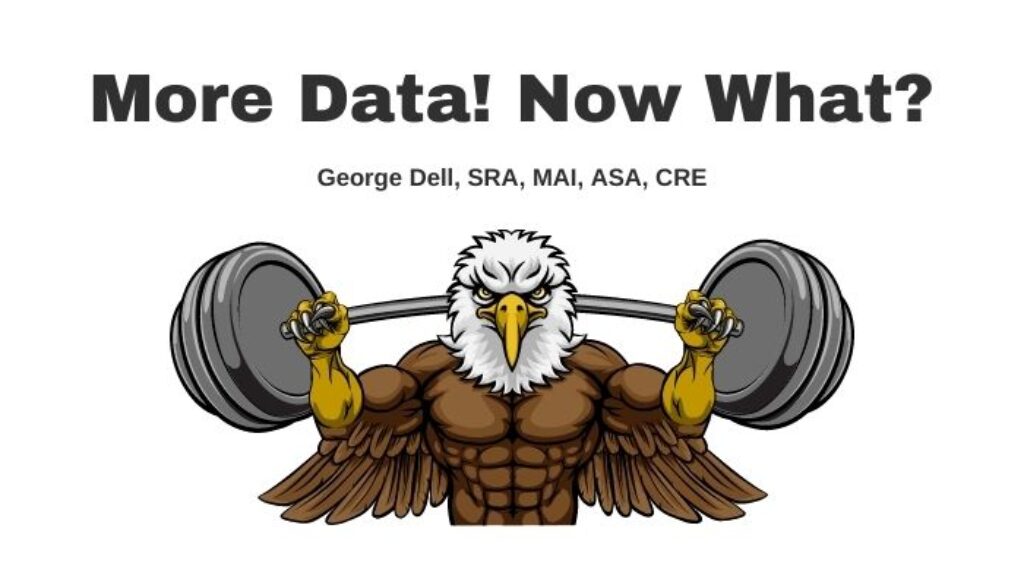Fannie and Freddie property data will soon become public. Now What?
Everyone seems to agree, or even shout! “Give us the data and we can do better!” Even appraisers. Problem. Appraisers have no real training in how to use data. You don’t need to worry about using data when you can just pick five comps. Just pick comps and go adjust.
Valuation comprises two thinkings. Two separate analyses: data picking and adjustment making. The theory was that you pick comps that require the least adjustment. Then you make adjustments to those comps you picked because they needed the least adjustment. Problem . . .
How do you calculate an adjustment to pick a comp?
How do you pick comps to calculate adjustments?
Think about it.
You need to pick your data set to calculate your adjustments. But you first need to have your adjustments to pick the ‘right’ comps. Oh darn. What do I do?
Guess we just mush together the two theories, and say “trust me!” – I am well trained, well experienced, and well-adjusted!
Historically, the early ages of appraisal, data was heavy on the art part. The MAI under whom I trained, emphasized the importance of personal contact for gathering property/sales information. (He sent out several hundred holiday cards each year to people in the industry.)
MLS was rough, and available in book form four times a year, with in-between ‘hot sheets.’ The only way to see if a listing had sold was to call the agent. The only way! Commercial property information was only available by personal contact, or clipped from the legal newspaper weekly update. Public records confirmation took weeks. The art part was also the human part – knowing people on a personal basis. This included appraiser friends with which to exchange comps at chapter meetings.
The appraisal “process” had to mush together expected adjustments while collecting comparable sales. The scientific rule given was a comp should be competitive, similar, and able to be compared. Science.
The discipline of data science provides perhaps a dozen ways of measuring competitive similarity. I have never understood what “able to be compared” really means! (I can compare an apple to an orange easily – and know they are not ‘comparable’.)
Data science emphasizes science. Yet it also recognizes that science is part art. Data science explicitly recognizes the need for a field-related expert – the appraiser.
So what does the ‘modernized’ appraiser do? The advanced, progressive appraiser actually simplifies the “appraisal process” into a parallel (but cleaner) analytic process: 1) ID the problem and assumptions; 2) identify all relevant sales available; 3) Apply one of the three predictive models; and, 4) deliver the data stream ‘report.’
More, and consistent data makes EBV© (Evidence Based Valuation) easier, more accurate, and more reliable for clients. It eliminates or greatly reduces chances of bias. And it is more fun!
Yes. More data means more professional satisfaction. Deliver results in place of opinion!
